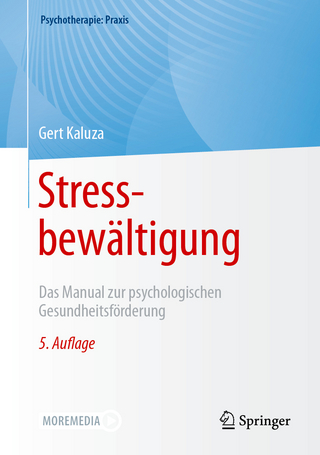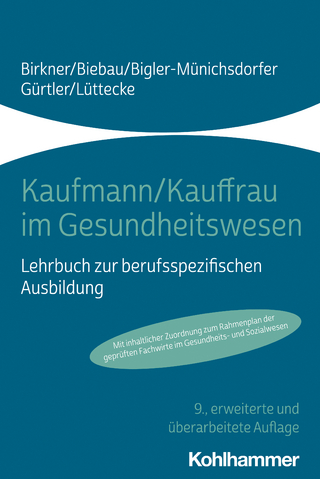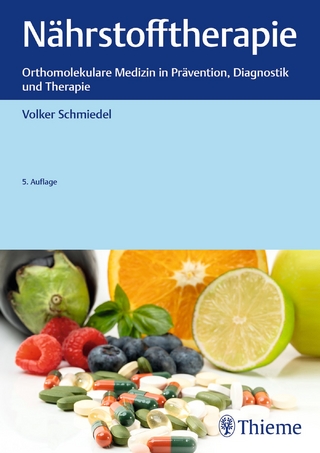
Occupational Strain and Efficacy in Human Service Workers
When the Rescuer Becomes the Victim
Seiten
2001
Springer (Verlag)
978-0-7923-6852-6 (ISBN)
Springer (Verlag)
978-0-7923-6852-6 (ISBN)
managers and staffto be more aware of their role in preventing strain, contributing to strain, and managing strain; managers to know ofand use a range of resources to assist them with occupational strain issues, eg, Occupational Health and Safety Advisor, and StaffCounsellor;
Workers' compensation data in a large public sector human service agency clearly indicated that the most significant type ofcompensable incident that occurred within the organisation was that ofanxiety and stress related conditions. From September 1987 to September 1995, there had been 219 workers compensation claims relating to workplace strain (stress) in the agency. The total cost of these claims was $4,865,249. A study was commissioned by the agency in early 1996 to review workplace strain. The outcomes sought by the department following the implementation of the project recommendations, as outlined in the project briefwere to have: 1. a reduction ofpsychological and physical injuries of employees; 2. shorter duration of claims; 3. a reduction in the costs of claims; 4. a potential drop in sick leave; 5. a reduction in non compensable measures of occupational strain eg, absenteeism, poor performance, work flow interference, staffturnover, replacement and training costs; 6. managers and staffto be more aware of their role in preventing strain, contributing to strain, and managing strain; 7. managers to know ofand use a range of resources to assist them with occupational strain issues, eg, Occupational Health and Safety Advisor, and StaffCounsellor; and 8. staff to have a clear means and strategies to assist them with occupational strain and avenues to resolve conflict. OBJECTIVES OF THE REVIEW The main objectives of the review, as outlined in the project brief, were to have: 1.
Workers' compensation data in a large public sector human service agency clearly indicated that the most significant type ofcompensable incident that occurred within the organisation was that ofanxiety and stress related conditions. From September 1987 to September 1995, there had been 219 workers compensation claims relating to workplace strain (stress) in the agency. The total cost of these claims was $4,865,249. A study was commissioned by the agency in early 1996 to review workplace strain. The outcomes sought by the department following the implementation of the project recommendations, as outlined in the project briefwere to have: 1. a reduction ofpsychological and physical injuries of employees; 2. shorter duration of claims; 3. a reduction in the costs of claims; 4. a potential drop in sick leave; 5. a reduction in non compensable measures of occupational strain eg, absenteeism, poor performance, work flow interference, staffturnover, replacement and training costs; 6. managers and staffto be more aware of their role in preventing strain, contributing to strain, and managing strain; 7. managers to know ofand use a range of resources to assist them with occupational strain issues, eg, Occupational Health and Safety Advisor, and StaffCounsellor; and 8. staff to have a clear means and strategies to assist them with occupational strain and avenues to resolve conflict. OBJECTIVES OF THE REVIEW The main objectives of the review, as outlined in the project brief, were to have: 1.
1 The Problem,The Organisation, The Context.- 2 Occupational Strain and Efficacy: Costs, Theory, and Intervention.- 3 Views of the Research Reference Group.- 4 Stress Leave and Return to Work.- 5 The Philosophy, Practice and Work Experience of Managers and Supervisors.- 6 An Organisational Survey of Human Service Workers: Method.- 7 An Organisational Survey of Human Service Workers: Results.- 8 Discussion.- 9 Workplace Stress Prevention.- Summary.- Appendices.- References.
| Erscheint lt. Verlag | 31.3.2001 |
|---|---|
| Zusatzinfo | 2 Illustrations, black and white; VII, 235 p. 2 illus. |
| Verlagsort | Dordrecht |
| Sprache | englisch |
| Maße | 155 x 235 mm |
| Themenwelt | Geisteswissenschaften ► Psychologie |
| Medizin / Pharmazie ► Gesundheitsfachberufe | |
| Medizin / Pharmazie ► Medizinische Fachgebiete ► Psychiatrie / Psychotherapie | |
| Studium ► Querschnittsbereiche ► Prävention / Gesundheitsförderung | |
| Sozialwissenschaften ► Pädagogik ► Sozialpädagogik | |
| Sozialwissenschaften ► Soziologie | |
| ISBN-10 | 0-7923-6852-5 / 0792368525 |
| ISBN-13 | 978-0-7923-6852-6 / 9780792368526 |
| Zustand | Neuware |
| Haben Sie eine Frage zum Produkt? |
Mehr entdecken
aus dem Bereich
aus dem Bereich
das Manual zur psychologischen Gesundheitsförderung
Buch | Hardcover (2023)
Springer Berlin (Verlag)
39,99 €
Lehrbuch zur berufsspezifischen Ausbildung
Buch | Softcover (2021)
Kohlhammer (Verlag)
46,00 €
Orthomolekulare Medizin in Prävention, Diagnostik und Therapie
Buch | Hardcover (2022)
Thieme (Verlag)
59,99 €


